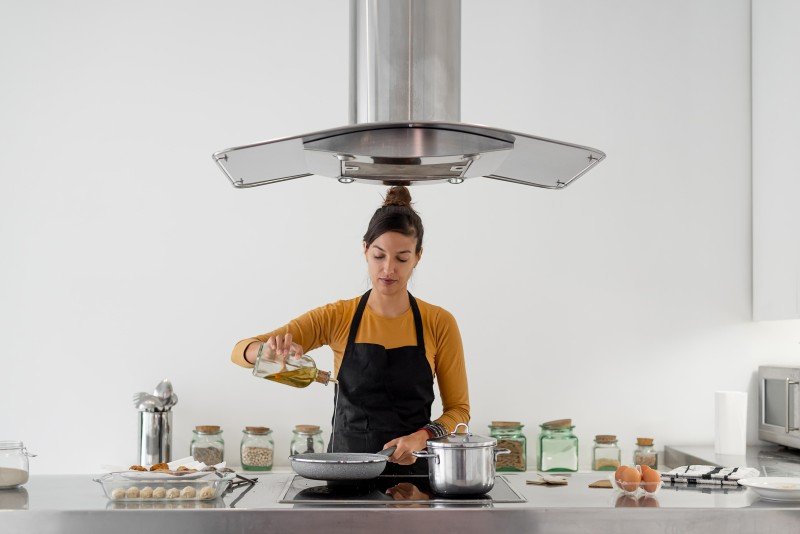Understanding Ovens and Hobs: A Comprehensive Guide
Cooking has actually come a long way given that the days of open flames and simple cooking methods. Today, ovens and hobs are at the heart of modern-day cooking areas, offering versatility, performance, and a range of cooking alternatives. Whether you are an amateur cook or a skilled chef, understanding the differences, functions, and functions of these appliances is important for taking full advantage of cooking potential. This post breaks down the various types of ovens and hobs available on the marketplace, their functionalities, and how to pick the right devices for your kitchen.
What is an Oven?
An oven is an enclosed space developed for heating and cooking food, using numerous approaches such as baking, roasting, and broiling. Ovens are available in various types, each serving distinct cooking preferences and requirements.
Kinds of Ovens
Standard Ovens:
- Use gas or electricity for heating.
- Generally consist of a heating aspect at the top and bottom.
- Perfect for standard baking jobs.
Convection Ovens:
- Use a fan to flow hot air, promoting even cooking.
- Ideal for baking, roasting, and reheating.
- Lowers cooking time and enhances taste.
Steam Ovens:
- Utilize steam to prepare food while retaining moisture and nutrients.
- Exceptional for health-conscious cooking, such as veggies and fish.
Microwave Ovens:
- Use electromagnetic radiation to heat food rapidly.
- Best for reheating leftovers or cooking basic meals.
Wall Ovens:
- Built into the wall, saving space in the kitchen.
- Offered in different configurations, including single or double ovens.
Key Features of Ovens
- Temperature Control: Precision heating for numerous baking and preparing processes.
- Self-Cleaning Options: Some designs have self-cleaning modes that use heats to burn off food residue.
- Smart Features: Wi-Fi connection allows remote pre-heating, tracking, and recipe management through smartphones.
What is a Hob?
A hob is a cooking surface, typically referred to as a range or cooktop, where cookware is positioned for heating. Hobs are available in different products, sizes, and heating approaches, catering to diverse cooking needs.
Kinds of Hobs
Gas Hobs:
- Utilize gas burners for direct flame cooking.
- Deal accurate temperature control and are preferred by lots of expert chefs.
Electric Hobs:
- Use electric coils or smooth tops.
- Some models are equipped with induction technology, offering rapid heating through electromagnetic energy.
Induction Hobs:
- Cookware must be made from magnetic materials.
- Very energy-efficient, supplying rapid heat and reducing burn risks.
Ceramic Hobs:
- Feature a glass-ceramic surface area with heating components beneath.
- Easy to clean but can be less energy-efficient than induction hobs.
Key Features of Hobs
- Burner Configuration: Varies from 2 to 6 burners, depending upon model and size.
- Power Levels: Multiple settings permit higher precision in cooking.
- Security Features: Options like flame failure devices and kid lock settings make sure security during cooking.
Picking the Right Oven and Hob
Selecting the best oven and hob for your kitchen involves cautious consideration of numerous factors. Below is a list of questions to direct your choice procedure:
- What is your primary cooking design?
- Just how much kitchen area do you have?
- What is your spending plan?
- Do you prefer gas or electric appliances?
- Are additional features like wise connectivity important to you?
Table Summary of Key Differences Between Ovens and Hobs
| Function | Oven | Hob |
|---|---|---|
| Functions | Baking, roasting, broiling | Boiling, frying, sautéing |
| Cooking Method | Enclosed heat | Direct cooking surface |
| Temperature level Control | Adjustable settings | Stove settings |
| Types | Electric, gas, convection, microwave | Gas, electric, induction, ceramic |
| Cooking Capacity | Larger (can cook numerous meals) | Smaller (concentrate on instant cooking) |
| Cleaning | Self-cleaning alternatives available | Normally manual cleaning needed |
Maintenance Tips for Ovens and Hobs
Proper care and maintenance of your cooking home appliances extend their life expectancy and efficiency. Here are vital maintenance tips:
Regular Cleaning:
- Clean the oven interior after each use to prevent residue buildup.
- Clean down hob surfaces after cooking to prevent discolorations.
Check Seals:
- Ensure the oven door seals are undamaged to keep energy performance.
- Change worn-out gaskets and seals as required.
Examine Burners and Elements:
- For gas hobs, check for clogs in burners.
- For electric hobs, inspect coils and surface areas for indications of wear.
FAQs
Can I use any pots and pans on induction hobs?
- No, induction hobs just work with magnetic cookware, such as cast iron or stainless steel.
What is the most energy-efficient cooking home appliance?
- Induction hobs are generally the most energy-efficient choice, utilizing less energy than standard gas or electric models.
How typically should I clean my oven?
- It's advisable to clean your oven every couple of months, or more regularly if you utilize it often.
Can I set up an oven and hob individually?
- Yes, both home appliances can be installed separately based on kitchen style and space.
What should I think about when installing a gas hob?
- Guarantee appropriate ventilation and follow local safety codes. Ovens And Hobs is suggested to have an expert set up gas appliances.
Understanding the features, types, and upkeep of ovens and hobs can substantially enhance your cooking experiences. Selecting the best appliances tailored to your cooking design, kitchen area, and safety requirements can make all the difference in accomplishing cooking success. By being notified about your alternatives, you can delight in a more effective and pleasurable cooking journey, bringing delicious meals to your table with ease.

